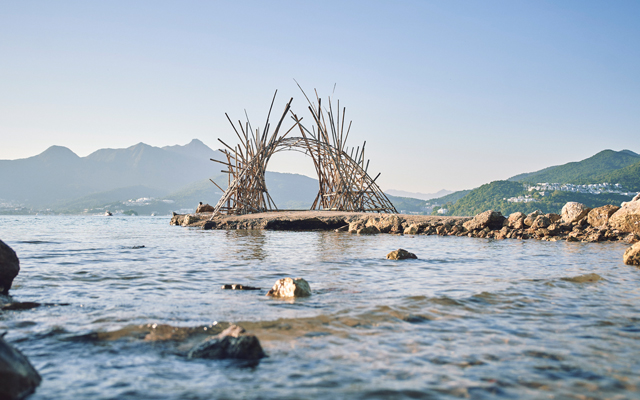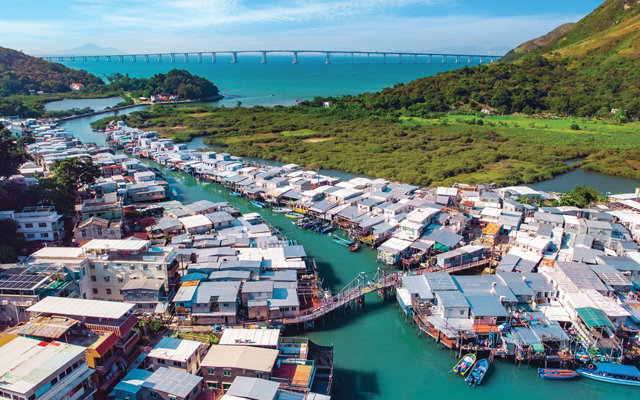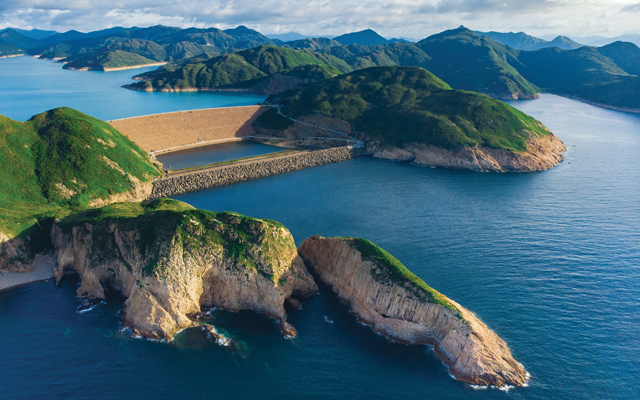A renewed emphasis on island tourism will see developments in eco-recreation, luxury yacht tours and other bespoke experiences, drawing visitors beyond the city
Released in December, the Development Blueprint for Hong Kong’s Tourism Industry 2.0 by the Culture, Sports and Tourism Bureau (CSTB) emphasises island tourism with plans to drive development and promotional efforts.
Considering the cultural and natural resources of individual islands, the blueprint will explore and promote distinctive countryside and island tourism itineraries while enhancing amenities for visitors.

For instance, efforts to develop Lantau Island as a ‘Tourism Island’ will be intensified, integrating the leisure and recreational elements of North Lantau with the eco-tourism offerings of South Lantau. In addition, the development of the South Lantau Eco-Recreation Corridor will be expedited, as well as the ex-Lamma Quarry area into a resort and outdoor recreational area.
Yacht tourism is on the list as well. The Hong Kong Development Bureau is looking to promote this in the expansion area of the Aberdeen Typhoon Shelter, the ex-Lamma Quarry area, and the waterfront near Hung Hom Station. It will invite private organisations to explore the construction and operation of yacht berthing facilities there, alongside other initiatives.
In fact, island tourism is not something new, as the Hong Kong Tourism Board (HKTB) has been a long-time supporter of this initiative.
A HKTB spokesman said: “The city’s breathtaking great outdoors are minutes away from the urban hustles, making it an integral part of Hong Kong’s tourism appeal. As such, we leverage the city’s scenic nature and outdoor activities for tourism promotions on various channels to provide an enriched experience to visitors.”
The spokesman cited the year-round Hong Kong Great Outdoors campaign, launched in 2009, which provides guides to activities such as hiking, beach outings, outdoor sports, cycling, sightseeing, and outlying island tours.

HKTB has also been supporting outlying island event promotions to raise awareness of the vibrant culture and diverse happenings on the islands. These include the Sai Kung Hoi Arts Festival and the Cheung Chau Bun Festival.
Founder and chief foodie officer of Hong Kong Food Tours, Cecilia Leung, welcomes the focus on island tourism, citing it as an opportunity to showcase Hong Kong’s lesser-known natural beauty and attract eco-tourism travellers who might not otherwise consider the city as a destination.
Said Leung: “This also encourages repeat travellers to return to Hong Kong to explore the islands. Although our groups are small, logistical arrangements still need to be carefully considered, and it is crucial to ensure that the environment is being protected.”
She also noted that private and customised tours are on the rise. “A premium, more exclusive island experience could be developed for higher-spending travellers seeking unique experiences,” she added.
“It’s an interesting idea to explore building large-scale integrated resorts as part of the island tourism strategy. These integrated resorts should still have easy access to the city centre to allow visitors to explore other parts of Hong Kong,” Leung said.
When it comes to green and culture tourism, Walk in Hong Kong co-founder and CEO Paul Chan, and Eco Travel GM Derek Tse specialise in such journeys, yet still face challenges. This could be something the blueprint could improve in the future.
Tse opined that most of these islands for tourism are located in the eastern part of Hong Kong, such as Sai Kung, Lai Chi Wo and Sha Tau Kok.
He added: “We don’t openly advertise this as a regular offering and only provide tailor-made arrangements due to challenges such as logistical limitations. For instance, we organised a half-day post-conference tour to the Hong Kong UNESCO Global Geopark for 400 international doctors. However, due to a very limited selection of boats and a monopolised operation, we had no choice of vessel and had to split the group into two boats, despite booking two months in advance.”
Accessibility is key for Hong Kong’s more than 260 islands, emphasised Chan, adding that the government must play a role to facilitate this in order to fully integrate island tourism into the economy.

He said: “Although we are a forerunner in offering various experiences in Yan Chau Tong harbour as well as in the Sha Tau Kok (STK) Frontier Closed Area, the stumbling block is still the requirement to apply for an entry permit three days in advance.”
STK, a restricted area, was opened to visitors in 2022. Along with the neighbouring villages of Lai Chi Wo, Kuk Po, and Ap Chau, they form a cluster rich in Hakka culture.
In January, Chan incorporated the Countryside Harvest Festival of Kuk Po into the tour experience. By partnering with local villagers, the event featured outdoor concerts, drama performances, a photo exhibition with lion dance, and a marketplace. It drew one to two tour groups comprising overseas visitors.
Shared Chan: “Indeed, the city offers more options beyond popular destinations like Lantau and Cheung Chau. However, unpredictable summer weather limited our tour availability to autumn and winter. Price-wise, as it caters to a niche market, the costs of transportation and food arrangements to these remote areas are higher.”
In Sai Kung, the Hong Kong Pearl Cultivation Association offers a pearl farming workshop that incorporates eco-tourism elements that include environment, community and culture, as well as the actual hands-on experience.
General manager David Wong said: “The availability of hardware such as hotel facilities and piers are all the more important as the islands don’t have them. I believe that tourists (would rather) stay overnight on those remote islands than to rush to catch the last boat back to the city. Otherwise, they might need to charter a boat, which can be very costly.”











